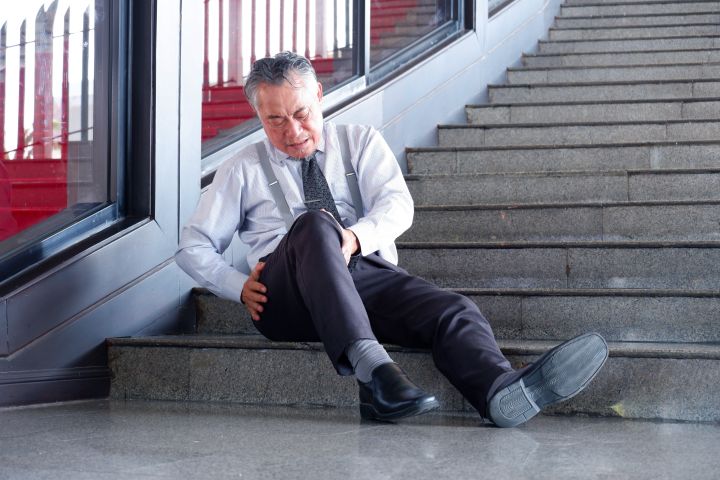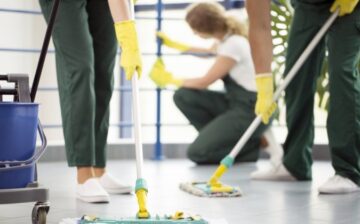Slip and fall accidents rank among the leading workplace injuries—they happen everywhere, from office buildings to construction sites. These incidents disrupt daily operations and threaten workers’ health and productivity. But what makes workplace injuries so serious? When accidents happen at work, both employers and employees face tricky legal situations.
This guide breaks down common slip and fall injuries, their root causes, and practical prevention methods.

Understanding Personal Injury
Personal injury is physical pain that extends to your mental and emotional well-being, too, especially when someone else’s negligence caused it. In workplace settings, slip and fall incidents fall under personal injury law, which ensures that injured employees can seek compensation for their losses.
Reporting accidents promptly is critical. Medical documentation provides proof of your injuries and creates a clear case record. Employers rely on timely reports to address hazards and improve workplace safety.
Partnering with a reputable personal injury lawyer right away builds a stronger foundation for your case. Legal experts like those from Sadaka Law will stand up for your right to compensation. They’ll stand beside you, gathering evidence and pushing for accountability from those who caused your injuries and suffering.
Common Slip and Fall Injuries
Slip and fall accidents result in various injuries, affecting your ability to work and live comfortably. Here’s what medical professionals see regularly:
Fractures
During a fall, your reflexes kick in. Your hands reach out to break your fall while your legs try to stabilize you. That’s why wrists, ankles, and hips take the brunt of the impact. Falls are one of the leading causes of bone fractures, especially among adults. A broken bone means putting your life on pause. Surgery, physical therapy, and extended rest periods disrupt everything from your morning routine to your work schedule.
Sprains and Strains
Sprains and strains happen when ligaments or muscles are overstretched during a fall. Some injuries appear minor at first glance, but ankle and knee damage often leads to intense pain and long-term mobility issues. Many people struggle with ongoing pain and limited movement long after the initial injury. For workers in physically demanding roles, sprains and strains can significantly affect job performance.
Head Injuries
Head injuries include mild concussions and severe traumatic brain injuries (TBIs). Symptoms include dizziness, headaches, and memory issues. These injuries require immediate medical care. Even minor symptoms can indicate serious underlying problems and become a lifelong concern.
Around 30% of patients who received a primary diagnosis of TBI experienced their condition worsening after five years. Brain injuries sometimes show their effects months or years later, forcing you to adapt how you handle work tasks.
Soft Tissue Injuries
Those black-and-blue marks from bruises or contusions might appear minor, but soft tissue damage underneath could leave you hurting for weeks. These injuries can restrict movement and affect daily activities. Some soft tissue injuries may even take weeks to heal and require therapy, impacting your ability to perform physical work.
Psychological Impact
Despite being surface level, physical wounds don’t just affect your body. A slip and fall can lead to anxiety, stress, and even a fear of falling again, especially if the recovery process is lengthy. Speaking with a counselor helps many people bounce back emotionally and rediscover their confidence.
Getting a small twist or bump checked out right away matters more than you might realize. Receiving prompt care helps reduce the risk of complications later on.
Causes of Slip and Fall Injuries
Several factors contribute to common slip and fall injuries. When you can identify what causes these accidents, you’re better equipped to prevent them.
Environmental Factors
Every workplace has its danger zones, like slippery floors, uneven ground, and dark corners. Regular maintenance and bright lighting lessen these threats. Something as basic as fixing uneven floorboards or adding non-slip grip mats protects everyone from a harmful accident.
Human Factors
Ever noticed how rushing through tasks or getting distracted leads to accidents? Walking slower and staying alert while moving through your workspace could lessen accident risks. Training programs that emphasize safe behavior promote a more vigilant workforce.
Equipment and Furnishings
Scattered supplies, blocked pathways, and broken equipment are more causes of slip and fall injuries. A tidy workspace with properly stored tools prevents many accidents. Smart layouts also help keep everyone safe by providing clear paths from point A to point B.
In addition to these three, location may contribute to a higher risk of accidents. Workers in construction sites, in particular, are likely to encounter injuries. In 2022, 38.4% of construction industry fatalities were due to falls, slips, and trips. This number also makes it essential to implement prevention strategies in the workplace.
Prevention Strategies
A proactive approach to safety decreases the chances of common slip and fall injuries while at work. Prevention starts with these workplace safety strategies:
Workplace Safety Policies
Comprehensive safety guidelines should address common hazards and outline preventive measures. Regular reviews of these policies keep them effective and relevant as workplace conditions evolve.
Training and Awareness
Conducting frequent training sessions keeps safety at the top of everyone’s mind. Educate employees about slip and fall risks to make sure they know how to act safely and spot potential hazards before they lead to accidents.
Environmental Modifications
Fresh flooring materials with proper grip paired with bright, well-maintained lighting transform dangerous areas into secure spaces for everyone. Warning signs give everyone a heads-up about temporary dangers.
Incident Reporting Mechanisms
When workers feel comfortable reporting safety issues, problems get fixed faster. Looking at accident patterns reveals which areas need the most attention.
A safe workplace doesn’t just prevent injuries. It creates an environment where everyone can thrive and work comfortably.
Legal Implications
Workers’ compensation laws cover most workplace injuries, including slip and fall accidents. The claims process needs specifics: detailed injury reports, prompt notification, and thorough medical exams. Each step of the documentation process strengthens your position when seeking compensation.Work-related slips and falls might qualify you for coverage beyond just medical bills—including lost income and compensation for suffering. On average, fall victims receive a settlement between USD$10,000 and USD$50,000 for their cases. These payments help handle the costs and stress of getting better, particularly with serious injuries.
Employers have a legal duty to maintain a safe environment. If the court rules them negligent and the cause of the accident is their failure to repair hazards, for instance, they could face liability claims. Addressing safety concerns promptly minimizes these risks.
Final Thoughts
The impact of common slip and fall injuries in the workplace goes beyond physical harm. Employers and employees play an equal role in minimizing risks by fostering a culture of safety. Keeping an eye on risks, taking action to prevent accidents, and dealing with incidents quickly protect everyone at work.
We hope you found this blog post on Understanding Common Slip and Fall Injuries in the Workplace, useful. Be sure to check out our post on Workplace Injury Prevention and Compensation for Movers Job for more great tips!
Have Experience in the Moving Industry? Want an Additional Income Stream? Work With All Around Moving!
Make a lucrative business with a new revenue stream! We’ll be there for you every step of the way. Click here to learn more.





